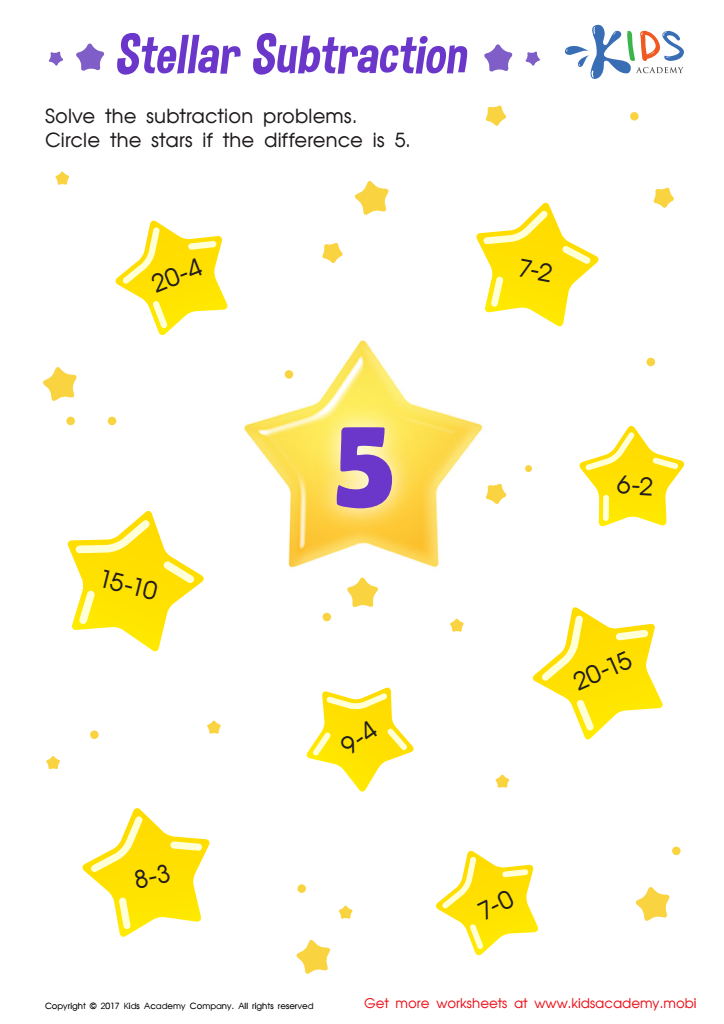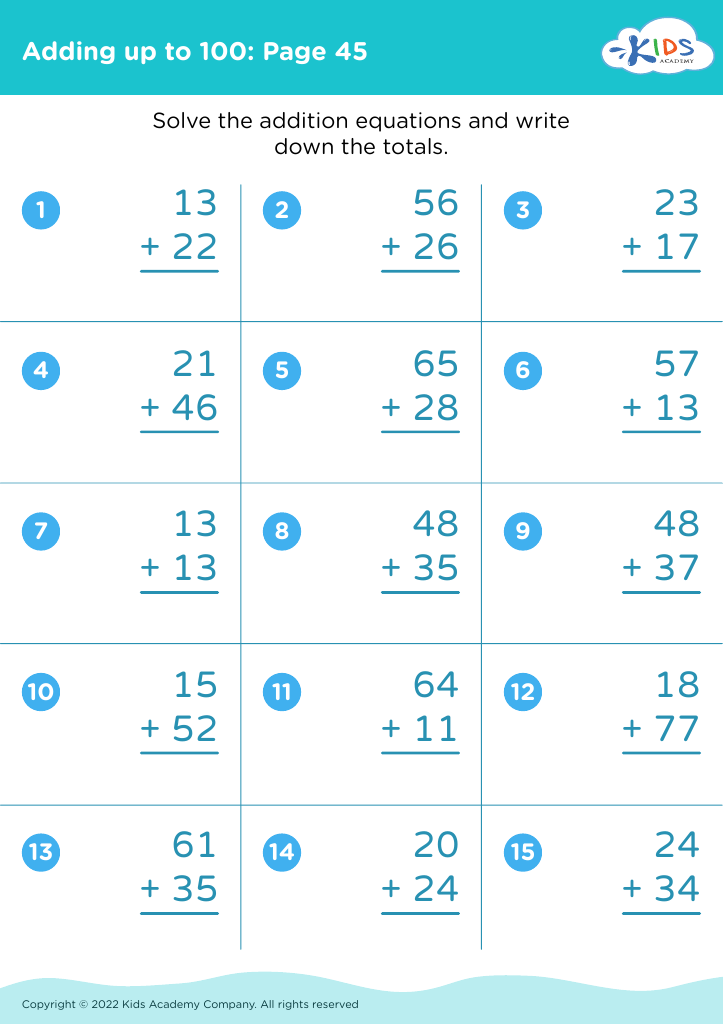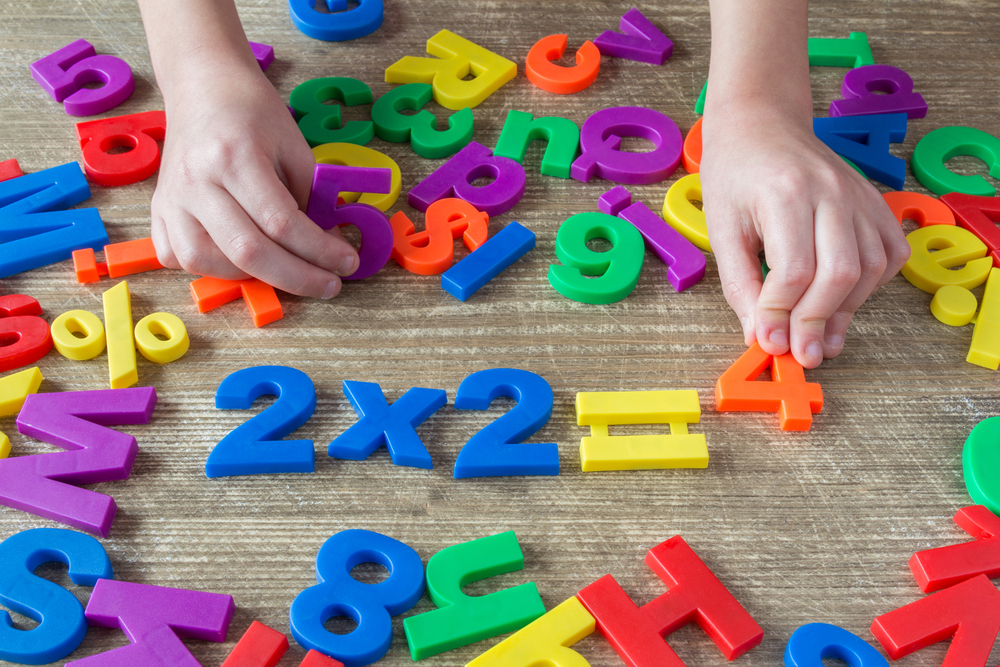Understanding number patterns Math Worksheets for Ages 5-8
6 filtered results
-
From - To
Explore our engaging "Understanding Number Patterns" math worksheets designed for children ages 5-8! These printable resources help young learners recognize and create patterns using numbers, enhancing their mathematical thinking and logic skills. Each worksheet is tailored to build a strong foundation in number sequences, enabling kids to identify and extend patterns with ease. Our fun and colorful activities make learning enjoyable, promoting a love for math from an early age. Perfect for classrooms and home learning, these worksheets support developmental milestones while encouraging critical thinking. Download now and watch your child’s confidence soar as they master number patterns!
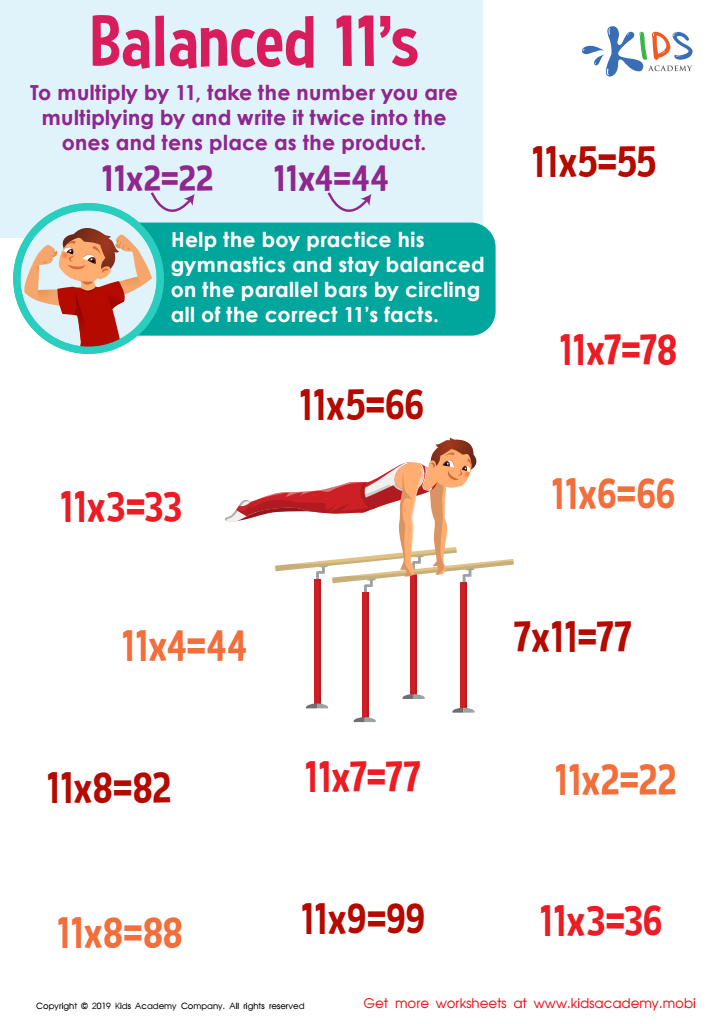

Balanced 11s Worksheet
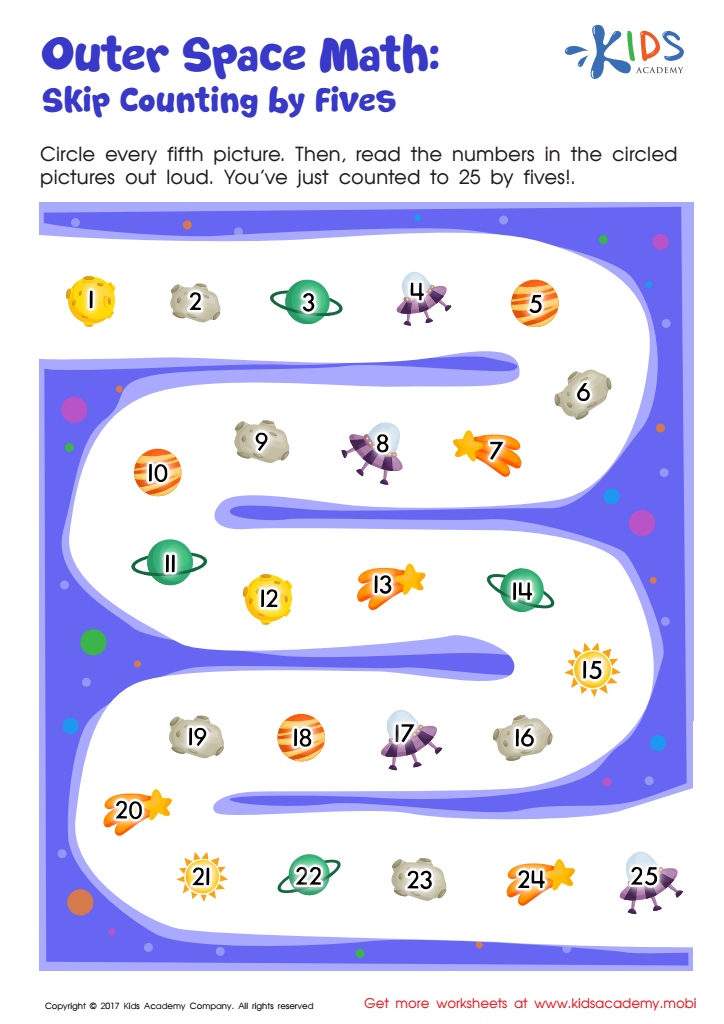

Skip Counting by 5s: Outer Space Math Printable
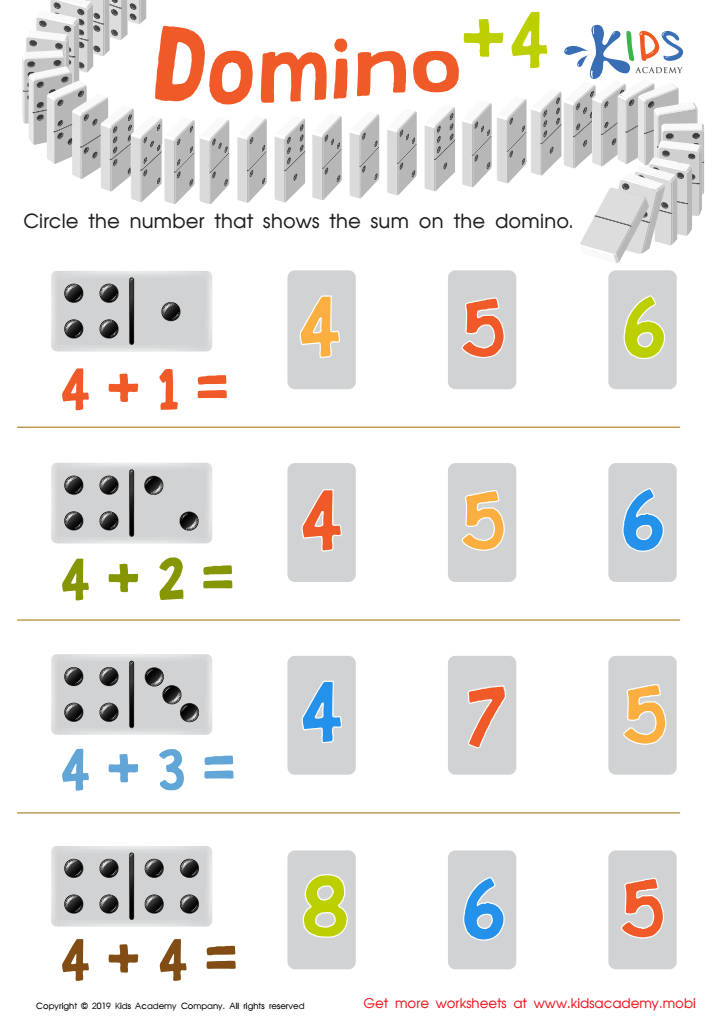

Domino +4 Worksheet
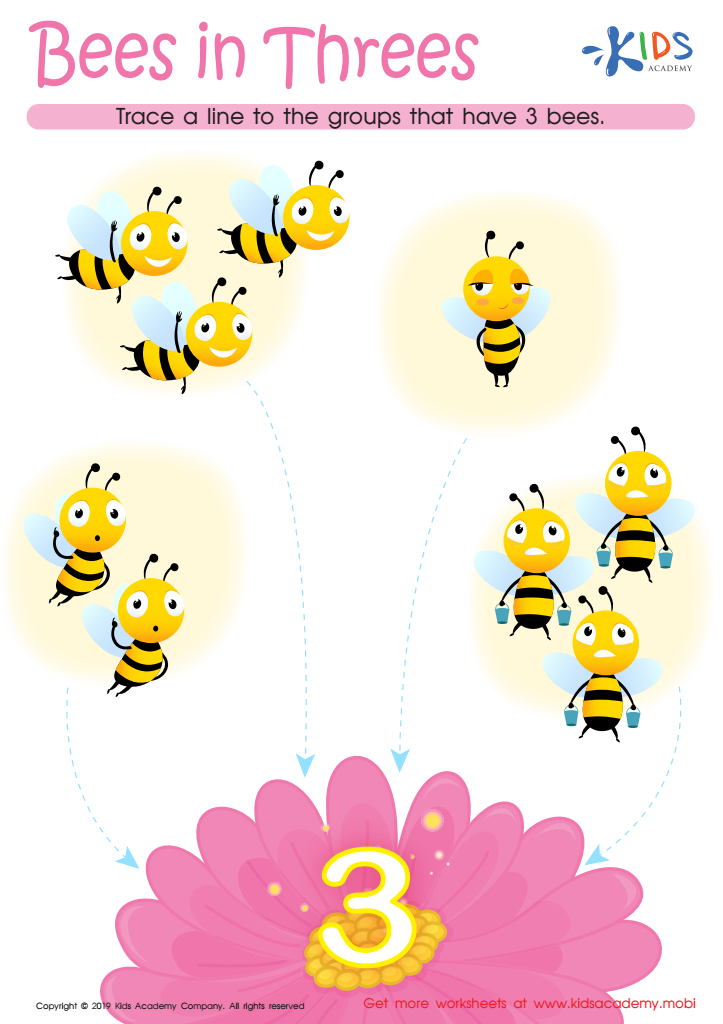

Bees in Threes Worksheet
Understanding number patterns is crucial for children aged 5-8 as it lays a foundational skill set that will benefit them throughout their education and everyday life. For parents and teachers, fostering this understanding is vital because it encourages critical thinking, problem-solving, and mathematical fluency.
Number patterns help children recognize relationships among numbers, enhancing their ability to make predictions and identify sequences. This early exposure not only builds their confidence in handling numbers but also cultivates a deeper love for mathematics. By engaging in pattern recognition, children develop key cognitive skills that are essential for advanced mathematical concepts later on, such as addition, subtraction, and even algebra.
Moreover, understanding patterns links directly to real-life situations, such as recognizing trends, making choices, or understanding schedules, thereby showcasing the relevance of math beyond the classroom. Encouraging discussions around patterns can promote collaboration and communication skills among peers, making math a more engaging and social experience.
In summary, when parents and teachers emphasize the importance of number patterns, they empower children to become confident, capable learners who can approach mathematical challenges with curiosity and resilience.
 Assign to My Students
Assign to My Students
